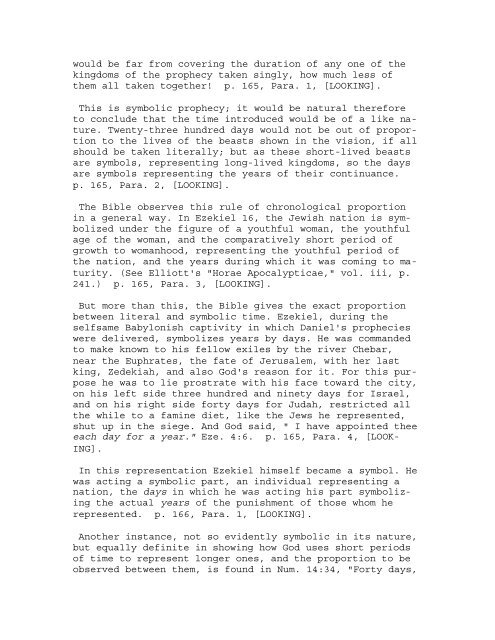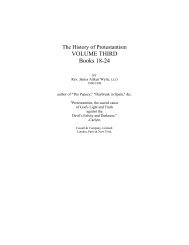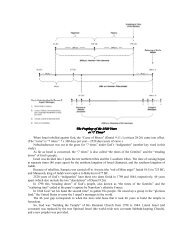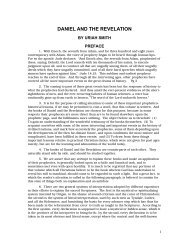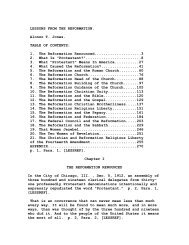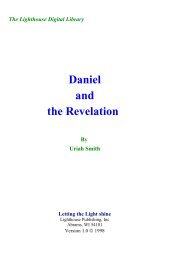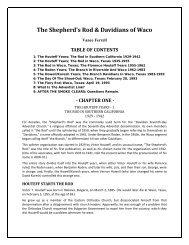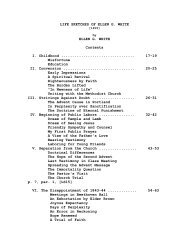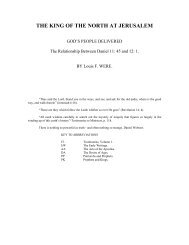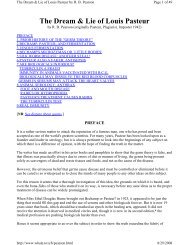LOOKING UNTO JESUS OR CHRIST IN TYPE AND ANTITYPE. BY ...
LOOKING UNTO JESUS OR CHRIST IN TYPE AND ANTITYPE. BY ...
LOOKING UNTO JESUS OR CHRIST IN TYPE AND ANTITYPE. BY ...
Create successful ePaper yourself
Turn your PDF publications into a flip-book with our unique Google optimized e-Paper software.
would be far from covering the duration of any one of the<br />
kingdoms of the prophecy taken singly, how much less of<br />
them all taken together! p. 165, Para. 1, [<strong>LOOK<strong>IN</strong>G</strong>].<br />
This is symbolic prophecy; it would be natural therefore<br />
to conclude that the time introduced would be of a like nature.<br />
Twenty-three hundred days would not be out of proportion<br />
to the lives of the beasts shown in the vision, if all<br />
should be taken literally; but as these short-lived beasts<br />
are symbols, representing long-lived kingdoms, so the days<br />
are symbols representing the years of their continuance.<br />
p. 165, Para. 2, [<strong>LOOK<strong>IN</strong>G</strong>].<br />
The Bible observes this rule of chronological proportion<br />
in a general way. In Ezekiel 16, the Jewish nation is symbolized<br />
under the figure of a youthful woman, the youthful<br />
age of the woman, and the comparatively short period of<br />
growth to womanhood, representing the youthful period of<br />
the nation, and the years during which it was coming to maturity.<br />
(See Elliott's "Horae Apocalypticae," vol. iii, p.<br />
241.) p. 165, Para. 3, [<strong>LOOK<strong>IN</strong>G</strong>].<br />
But more than this, the Bible gives the exact proportion<br />
between literal and symbolic time. Ezekiel, during the<br />
selfsame Babylonish captivity in which Daniel's prophecies<br />
were delivered, symbolizes years by days. He was commanded<br />
to make known to his fellow exiles by the river Chebar,<br />
near the Euphrates, the fate of Jerusalem, with her last<br />
king, Zedekiah, and also God's reason for it. For this purpose<br />
he was to lie prostrate with his face toward the city,<br />
on his left side three hundred and ninety days for Israel,<br />
and on his right side forty days for Judah, restricted all<br />
the while to a famine diet, like the Jews he represented,<br />
shut up in the siege. And God said, " I have appointed thee<br />
each day for a year." Eze. 4:6. p. 165, Para. 4, [LOOK-<br />
<strong>IN</strong>G].<br />
In this representation Ezekiel himself became a symbol. He<br />
was acting a symbolic part, an individual representing a<br />
nation, the days in which he was acting his part symbolizing<br />
the actual years of the punishment of those whom he<br />
represented. p. 166, Para. 1, [<strong>LOOK<strong>IN</strong>G</strong>].<br />
Another instance, not so evidently symbolic in its nature,<br />
but equally definite in showing how God uses short periods<br />
of time to represent longer ones, and the proportion to be<br />
observed between them, is found in Num. 14:34, "Forty days,


